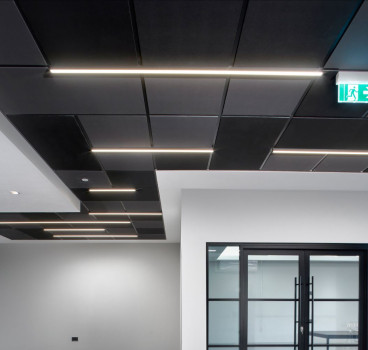Why rising construction output will come at a cost over the next 10 years
The global construction industry is on the brink of a significant transformation, with projections indicating substantial growth in the coming years. According to a report by Oxford Economics, global construction output is expected to increase by 42%, reaching $15.2 trillion by 2030. This growth is driven by factors such as urbanisation, population expansion and the increasing demand for infrastructure development, but it will come at a cost, writes John Ridgeway.
This anticipated growth is fraught with challenges, notably the rising costs associated with construction projects worldwide. Various factors, including economic uncertainties, geopolitical tensions, labour shortages and technological advancements, are contributing to these escalations. This means that understanding these dynamics will be crucial for stakeholders aiming to navigate the evolving landscape of the construction industry effectively.
Emerging economies, particularly in Asia, are set to offer the highest growth opportunities, generating almost two-thirds of global investments in construction. This surge is attributed to rapid urbanisation, infrastructure development and industrialisation in these regions. Conversely, developed markets are projected to rebound from previous economic downturns, contributing to the overall growth trajectory of the global construction industry.
Several key factors are contributing to the anticipated increase in construction costs over the next five years. Protectionist policies, political volatility and conflicts in various parts of the world are creating an unsettled global economic environment. These uncertainties exert pressure on material and labour costs, making construction projects more expensive.
A persistent shortage of skilled construction workers is also a significant challenge, particularly in high-growth sectors like renewable energy, digital infrastructure and housing. The demand for labour in these areas often outstrips supply, leading to increased costs and project delays. Countries such as India and Australia are experiencing notable labour shortages, contributing to rising construction expenses.
The rapid adoption of digital technologies and artificial intelligence (AI) in construction is further transforming the industry. While these advancements offer opportunities for efficiency and innovation, they also intensify competition for specialised materials and skilled labour, further driving up costs. The integration of technologies like Building Information Modelling (BIM), drones and autonomous machinery requires substantial investment, adding to overall project expenses.
Global supply chain disruptions, exacerbated by events such as the COVID-19 pandemic and geopolitical conflicts, have also led to shortages of essential construction materials. These disruptions result in increased material costs and extended project timelines, impacting the overall cost structure of construction projects.
Regional cost projections
That said, construction cost increases are expected to vary across different regions. In Saudi Arabia, we have seen projected cost increases of 5-7%, driven by economic growth and preparations for events like the 2034 FIFA World Cup, necessitating extensive construction of stadiums, hotels, and infrastructure.
In India, we are anticipating a 5-7% rise in construction costs, influenced by robust economic growth and significant investments in semiconductor manufacturing and industrial infrastructure. Australia is expecting a 5-6% increase, largely due to labour shortages, especially in regions like Queensland, which is preparing for the 2032 Olympic Games.
In the United States, a forecasted 4% rise in construction costs, contingent on labour availability and evolving policy decisions, is expected and in Europe, there are likely to be moderate cost increases ranging from 2-4%, influenced by political uncertainty and sluggish economic growth.

To navigate the challenges, we are likely to see more investment in technologies such as BIM, AI, and robotics, which can enhance efficiency, reduce waste and streamline project management. While the initial investment may be substantial, the long-term benefits include cost savings and improved project outcomes.
Addressing labour shortages through targeted training programmes and apprenticeships can also build a skilled workforce capable of meeting industry demands. Collaborations between educational institutions and construction firms can facilitate the development of relevant skills and competencies.
Diversifying suppliers and adopting just-in-time inventory practices can further mitigate the impact of supply chain disruptions. Establishing strong relationships with multiple suppliers and investing in local sourcing can also enhance supply chain stability.
All this adds up to the fact that the global construction industry is poised for substantial growth over the next five years, driven by urbanisation, infrastructure demands and technological advancements. However, this growth is accompanied by rising costs influenced by economic uncertainties, labour shortages and supply chain disruptions. By understanding these factors and implementing strategic measures, industry stakeholders can navigate the complexities of the evolving construction landscape, ensuring successful project outcomes in a dynamic global environment.
Additional Blogs

Why good contractors are walking away from bad projects
There is a growing change happening across the construction industry, one that many clients still have not fully recognised. Highly competent, reputable contractors are increasingly walking away from...
Read moreWhen fire breaks out who really knows the system
The story that caught my attention recently wasn’t about fire growth or building loss, it was about confusion. Specifically, the confusion faced by the fire service when arriving at buildings...
Read more

The design and development of Nexus Layouts
When Zentia set out to rethink the suspended ceiling, the brief was clear: deliver greater creative freedom for designers, more distinctive visual identity for clients, and a solution that could keep...
Read more